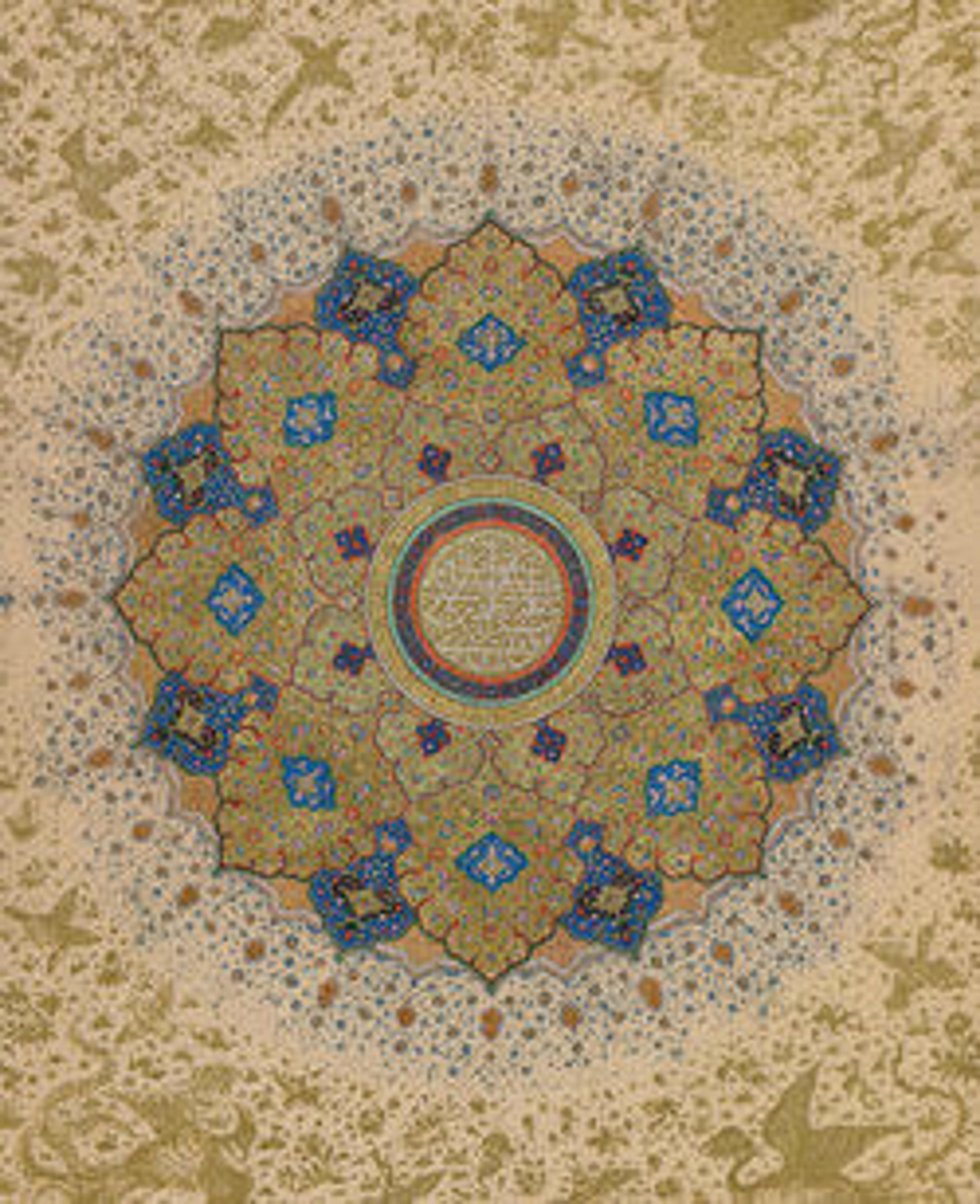Blue-Ground Dish with Floral Design
As early as the fifteenth century, Ottoman potters sometimes made vessels with white decoration in reserve on a blue ground rather than the more familiar blue-on-white type. Here the decoration is an array of of flowers springing from a single source, in essence a Chinese motif, but almost completely reinterpreted by the Turkish potter. The combination of recognizable tulip and prunus blossoms with more exotic and fancifully decorated jumbo flowers as well as the refreshing asymmetrical composition give this dish a charm and subtlety lacking in more rigid floral designs.
Artwork Details
- Title:Blue-Ground Dish with Floral Design
- Date:ca. 1560
- Geography:Made in Turkey, Iznik
- Medium:Stonepaste; polychrome painted under transparent glaze
- Dimensions:H. 2 3/4 in. (7 cm)
Diam.12 3/4 in. (32.4 cm) - Classification:Ceramics
- Credit Line:Mr. and Mrs. Isaac D. Fletcher Collection, Bequest of Isaac D. Fletcher, 1917
- Object Number:17.120.19
- Curatorial Department: Islamic Art
More Artwork
Research Resources
The Met provides unparalleled resources for research and welcomes an international community of students and scholars. The Met's Open Access API is where creators and researchers can connect to the The Met collection. Open Access data and public domain images are available for unrestricted commercial and noncommercial use without permission or fee.
To request images under copyright and other restrictions, please use this Image Request form.
Feedback
We continue to research and examine historical and cultural context for objects in The Met collection. If you have comments or questions about this object record, please contact us using the form below. The Museum looks forward to receiving your comments.
